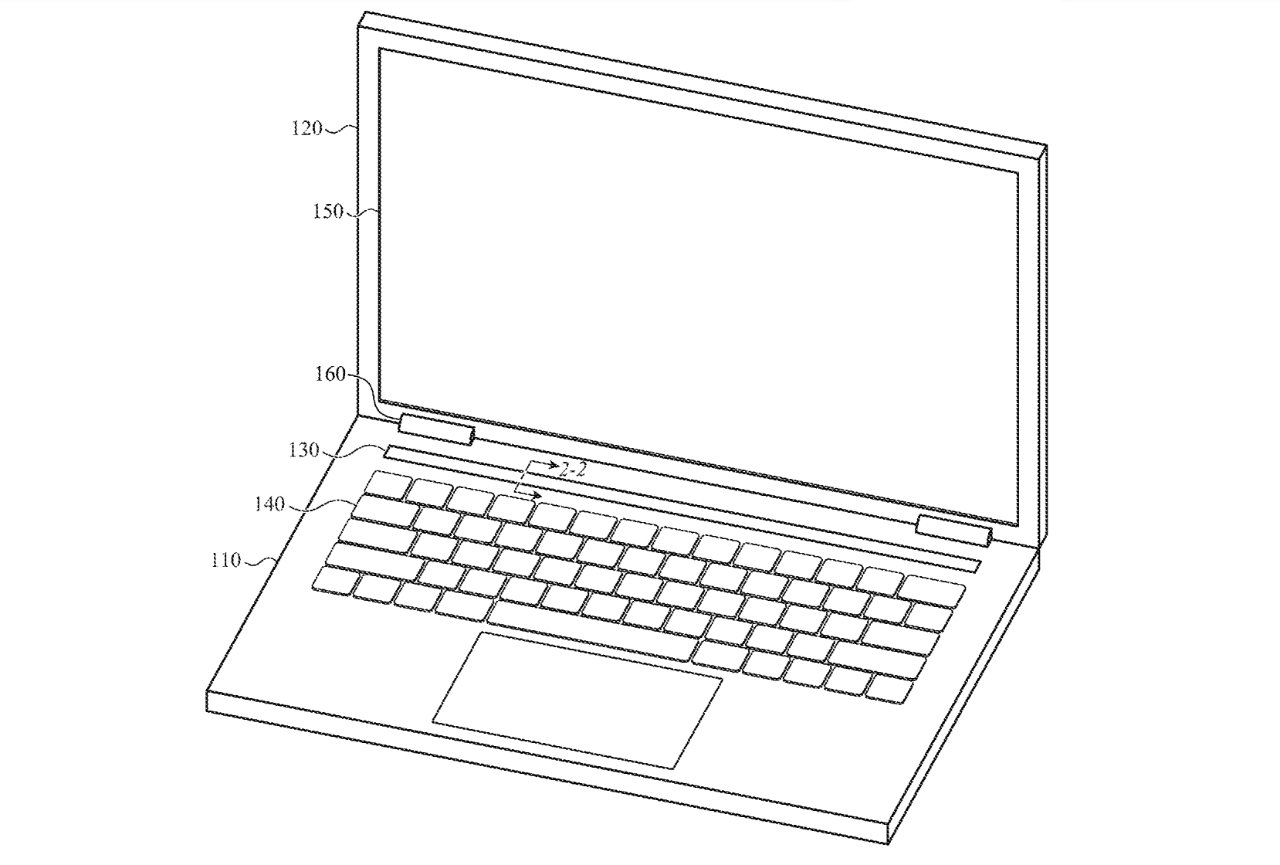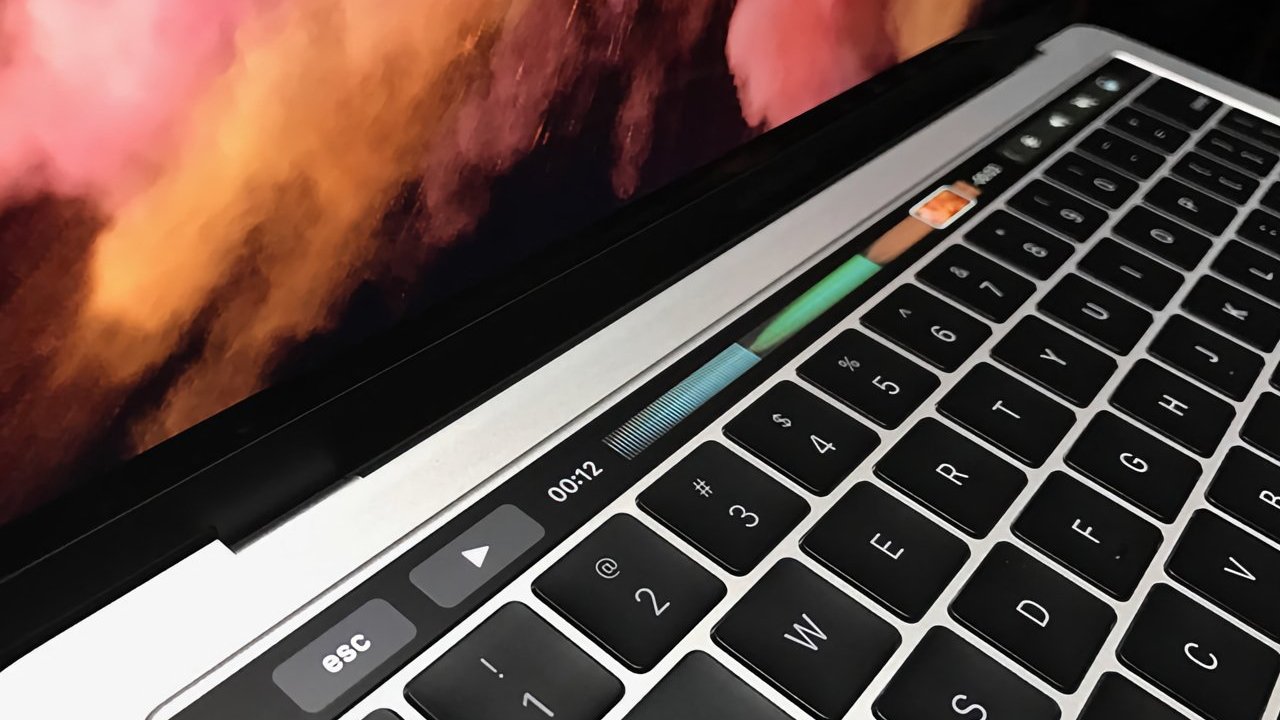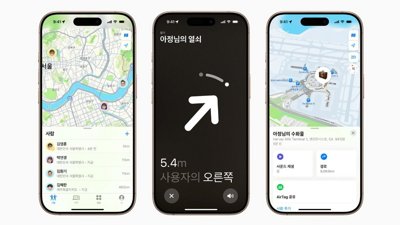Touch screens on the MacBook Pro haven't arrived yet, but Apple is working on inventing a force-sensitive display for the line — and maybe a revamped Touch Bar, too.
The Touch Bar was well enough done but not Apple's greatest success, and appears to have faded into history. Then Apple has always resisted making touch-sensitive screens for the MacBook Pro.
But it's been looking into it. Not only has Apple been researching touch-sensitive screens, it's been exploring force-sensitive ones — that could also be used in a Touch Bar.
A newly-revealed patent application called "Computing Device Enclosure Enclosing A Display And Force Sensors," covers both.
As ever in patents, little is mentioned without a qualification mentioning every possible variation or application of the idea, for the benefit of future lawyers. In this case, Apple blurs the line a lot between what users would recognize as a Touch Bar, and what they'd see as the main display.
Apple calls the monitor on a MacBook Pro, the "primary display," and describes a possible "secondary display" near a "primary input mechanism, such as a keyboard, trackpad, or the like."
Based on the illustrations in the patent application, that "secondary display" could go anywhere near the keyboard, but Apple shows it most as a horizontal line just above the top row of keys.
"The secondary display may function as an additional or ancillary input mechanism and may, in some embodiments, extend a functionality of the primary input mechanism," says the patent application. "The secondary display may further change one or more elements, icons, graphics, or the like shown on the display as a context of the user's interaction changes in order to provide content-sensitive inputs to the user."
"For example, as the user changes focus to, or otherwise selects or initiates, a program, application, or the like," it continues, "the secondary display may change one or more user-selectable graphics, buttons, icons, soft keys, and so on to ones that are specific to the program, application, or other context."
Call it a secondary display all you like, that's a Touch Bar. But it's not the same Touch Bar Apple introduced and then removed.
Instead, it's a Touch Bar that is force-sensitive. Rather than just recognizing taps and swipes as the old one did, this proposed Touch Bar would detect pressure.
So where before you might have a Touch Bar button that switches on Adobe Illustrator's pen tool, now you could have it alter the brush stroke depending on how hard you press.
 Detail from the patent showing region 130, which is clearly a Touch Bar, plus 150, which is the whole main display
Detail from the patent showing region 130, which is clearly a Touch Bar, plus 150, which is the whole main displayThe original Touch Bar did not have this capability, but that doesn't mean Apple didn't try. It would be possible that this patent application refers to an earlier idea for what would then become the familiar Touch Bar.
Except for this. "[At] least the secondary display is force-sensitive," says the patent application in one of its examples. And "the primary display may be touch- and/or force-sensitive in certain embodiments."
So it's true that Apple has considered making a MacBook Pro with a touchscreen. But it's also gone further, at least in its research, and explored force-touch too.
It's not the case that Apple would then go from being years behind other manufacturers, to leapfrogging them with a better touch screen. There are PC laptops that include force-sensitive screens.
There aren't many, though. So this could turn out to be another case of Apple coming late to a party, but then showing its rivals how it should be done.
 William Gallagher
William Gallagher




-xl-m.jpg)


-m.jpg)






 Malcolm Owen
Malcolm Owen

 Mike Wuerthele
Mike Wuerthele


 Thomas Sibilly
Thomas Sibilly
 Wesley Hilliard
Wesley Hilliard
 Marko Zivkovic
Marko Zivkovic








5 Comments
There’s always been a lot of banter around whether Apple should or shouldn’t incorporate touch into the MacBook products. I think that anyone who regularly or exclusively uses an iPad Pro with the Magic Keyboard probably has a pretty good feel for how the ability to use touch impacts their use of the machine. It’s not a perfect evaluation model because iPadOS is touch based by design whereas macOS is not at all touch friendly. It will also vary depending on the applications you use.
For everyday office productivity, browsing, email, types of things I’ve found that I rarely touch the iPad screen when the Magic Keyboard is attached. Strangely, there are a few wen sites like this one that have pop-under advertising windows that will not close with mouse clicks on the close button and require touch to close, but otherwise my iPad Pro screen stays fingerprint free with the keyboard attached.
3D Touch screens with Jedi powers? What next?
I found the TouchBar almost useless and don't mourn its demise. Please don't try to give me a full touch-screen display on my MacBook: I'm not yet past all the things that Apple used to say about having to stretch over the keyboard to get to the display and am much happier with 1/2 hands on the keyboard (with 1 sometimes on trackpad or mouse).
And I hate finger marks on my display!
I think the disappointment of the Touch Bar wasn't replacing the F-keys, or the non-physical Escape key (although that was an oversight), but that no-one did anything with it. Even Apple had problems, simply because it wasn't available in all machines, so anything that the Touch Bar could do had to be do-able by some other method. (Except maybe scrubbing non-skippable ads on YouTube, that was handy, and had no other way of doing it.)
I still think Apple has somewhere in its collective mind an idea to replace the physical keyboard with a dynamic control surface that acts like a keyboard when you need that, or any other input metaphor depending on the needs of the user. This development could be another step towards that, but I also think they're aware of the negative reception of the low-travel keyboards and how difficult reproducing full-travel without physical keys is.
Still, if they do bring back the Touch Bar, I'll probably buy it. I think this time around they may be more able to produce a Magic Keyboard with a Touch Bar as well, so maybe it will start to get some traction with developers. Plus I seldom use the F-keys for anything except when running Windows VMs, which I do less often now I have an actual Windows box.
Now if I could just get them to replace the SD card slots with another Thunderbolt 4 port or two...
No force. Touch sensitive only.